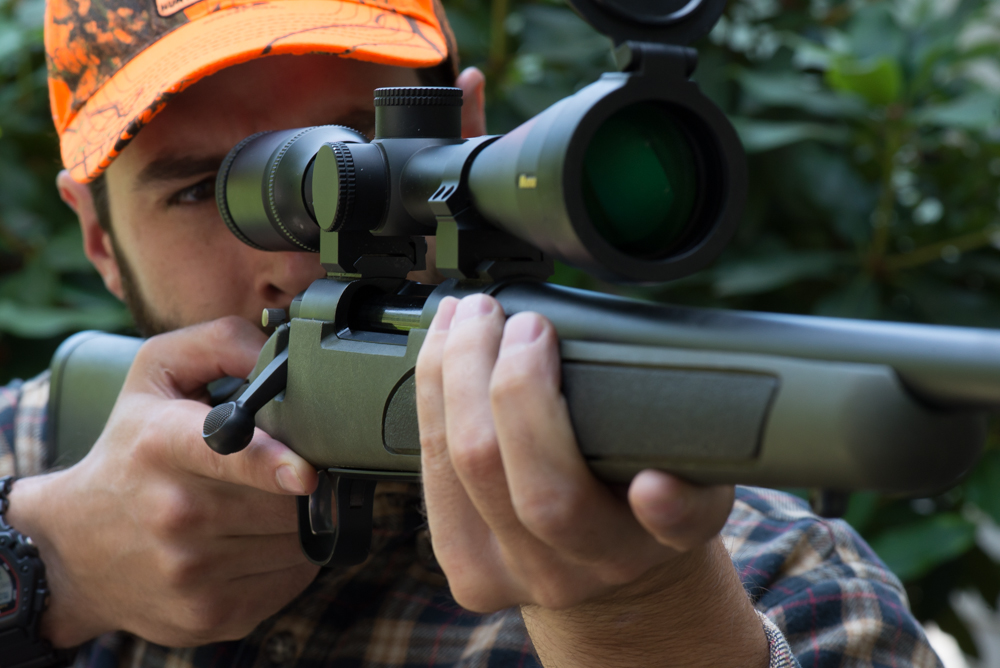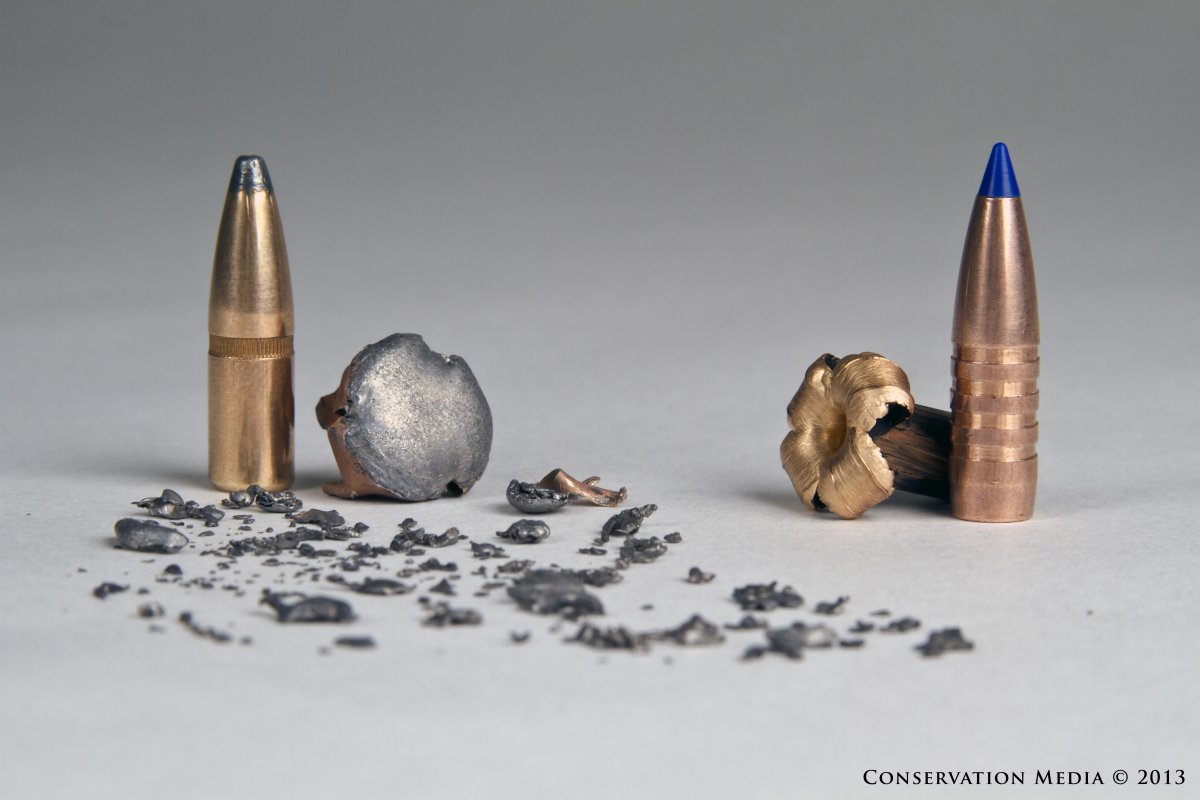May 25, 2021
Same tradition, different rules.
2020 saw recreation in our city centers severely limited, restricting human interactions and forcing isolation in homes. Supply chains were interrupted and panicked food shortages became the norm. Public land and beaches were periodically guarded by law enforcement. Amidst the chaos came a revived passion for the great outdoors and traditional harvesting methods from people who wanted to secure their own, natural food source.

“Hunters have historically taken the lead on issues affecting wildlife. Now they are switching en masse to non-lead ammunition as a next step in that conservation heritage." Credit: Oregon Zoo
According to California Department of Fish and Wildlife (1), nearly 300,000 hunting licenses were issued in the state, a 9% increase from 2019. Hunting participation increased nationwide with a significant portion of these sales coming from new and reactivated hunters (16% and 12%, respectively, in California alone), reversing a decades-long downward trend within those demographics. This is welcoming news for the agency as license sales provide funding for game code enforcement and grants for conservation projects across the state. If an individual chooses to hunt wildlife by gun, that firearm and all ammunition used collect an additional 11% tax under the Federal Aid in Wildlife Restoration Act, also known as Pittman-Robertson. This money is required by law to be used by states for habitat restoration/preservation, public land access improvement, wildlife research, hunter education, and a range of other projects beneficial to our wildlife (2).
For hunters in California, harvesting game now comes with one major caveat. Emblazoned across each license is a message that only non-lead ammunition can be used. Lead was first identified as harmful to waterfowl in the late 1800’s but furthering research and action is a typically slow process. Lead shot was ultimately banned in wetlands nationwide by 1991 with support from hunting organizations. (3) Most states have additional requirements in place for designated areas and species but California is the first in the US to mandate non-lead ammunition for all take of game state-wide. The cited impetus for this requirement was the protection of the native California condor, to prevent the unintentional ingestion of lead residues (fragments and shot) left in the remains of hunted or shot animals. Hunters in the state had already seen a lead-free zone established by the Ridley-Tree Condor Preservation Act of 2008 (4). The regulation, forced by threatening lawsuit, was expanded statewide by AB711 (2013), (5) which came into full effect July 1, 2019. The public outcry against the legislation was immediate and continues from groups across the country who are concerned that it is a broader attack on hunting rights.
The US Fish and Wildlife Service Condor Team has long been at the forefront of the issue, overcoming challenges California condor populations face on the road to recovery. “The science clearly demonstrates that the source of lead poisoning in California condor is spent lead ammunition found in the carrion condors eat.” says the program’s field coordinator Steve Kirkland, referring to studies that observed elevated blood lead levels in raptor species (6). “This does not mean that hunting, shooting, or putting down domestic stock should stop. Scavengers use this beneficial food source, but having it be contaminant free would be much better for all creatures who consume it. Hunting has a long tradition as a tool in the conservation and management of wildlife populations. By switching to non-lead ammunition, that tradition can have a positive effect on the recovery of the California condor and other scavengers by maintaining a safe and sustainable food source."
Lead has been used as a hunting projectile since the very earliest iterations of firearms. Vast mining operations have made it an extremely inexpensive material and its dense, malleable properties are utilized by ballistics experts for maintaining speed and form in flight. Deep roots in the history of bullet manufacturing makes lead the most widely available component in ammunition and consequently, most trusted by longtime ammunition consumers. Like most industries, phasing out a product equates to changing a tradition and that takes time.

"A shot lead centerfire bullet and its residual fragments (left) next to a modern copper bullet (right)." Credit: Conservation Media, 2013
On the other hand, non-lead alternatives like copper, steel, bismuth, and tungsten have only recently been developed. Their popularity and effectiveness only increase as the technology progresses, which drives manufacturing for the product under normal circumstances. 8.4 million new gun owners (only a small portion of which are license-carrying hunters) and 21 million guns sold in a year (a 60% rise from 2019) (7) as the result of COVID and politically related concerns, are not normal circumstances. Prices have gone up and supplies have dwindled- the very same reasons cited by people who did not make the voluntary switch to non-lead ammunition, according to past surveys in Arizona (8) and Oregon (9). Ammunition, whether it contained lead or not, was on backorder throughout the country and industry estimates do not see that changing anytime soon. It has yet to be seen how this commerce translates to income for ecological projects but hunters, particularly those in California who want to comply with the law and keep lead off the landscape, adapted in the face of the strictest background check requirements in the nation and another new law that prohibit ammunition shipments by mail.
Hunters new and old are participating in record numbers across the US, providing funding that will benefit all wildlife (game and nongame) and creating food sources for scavenging wildlife species (10). As for lead ammunition- many influential groups like the Theodore Roosevelt Conservation Project, National Wildlife Federation, Oregon Zoo, and The Peregrine Fund (as well as state fish and game agencies from Arizona, Minnesota, Oregon, and Utah to name a few) advocate for a voluntary switch to reduce negative impacts to wildlife ecosystem-wide, even well outside the range of the condor.
The Sierra Club has long advocated this ethical switch and recognized the importance of hunting for ecosystem health. (11) It has found common ground with the conservation goals of hunters since its inception. The unique friendship of conservationists John Muir and President Teddy Roosevelt informed each other’s beliefs about the practice. Their famous 1903 trip to Yellowstone not only inspired the creation of the National Parks system but cascaded into expansion of wildlife preserve areas championed by Roosevelt (12).
Self-regulation is a core concept in the hunting community- yielding landmark legislation like the Pittman-Robertson Act, game size and age restriction agreements, creation of enforcement branches and game codes, wetlands and migratory bird protections, and the concept of ethical Fair Chase. Historically these paradigm shifts have been driven by stakeholders that have the most to lose from degraded ecosystems, the hunting public itself. The weight of that responsibility is not lost on this community.
The lead ammunition issue in California has shown that legislation is subject to political discord. Imposing change on a demographic of outdoorsmen and women who already face tremendous hurdles and consistently provide a disproportionately large portion of the state’s conservation funding, will only serve to incite conflict. It has been understood for some time (13) that effective, science-based education and awareness is key for lasting change within the hunting community. Arizona, for example, has consistently observed nearly 90% of hunters taking steps to eliminate exposure to re-introduced California condors (8). This was achieved through an outreach and education program that provides vouchers for free nonlead ammunition, or incentives for removing the remains of lead-shot carcasses. A similar response was seen in Oregon on The Nature Conservancy’s Zumwalt Prairie Preserve, where cow elk hunters that chose to use non-lead ammunition went from 26% to 77% over 4 years when provided information and offered an opportunity to enter a drawing for gift cards. Voluntary efforts to switch should be applauded especially when it is not mandated and informed discussions with hunters are encouraged to understand their perspective and the challenges they face. Refer to professional sources like the North American Non-lead Partnership (14) that specialize in this type of work if you are unfamiliar with the complexities of hunting and continue to support conservation groups that promote science-based outreach.
If you are a hunter, remember that meaningful change comes from within. Examine the evidence available on non-lead ammunition (14), test what is effective with your firearm, purchase non-lead to steer manufacturing, continue contributing to organizations that support conservation, buy tags/supplies that support state-level conservation, and by all means- consider using non-lead ammunition for all your hunts. Initial surveys in Oregon (9), where lead ammunition is not widely restricted, showed that most hunters would voluntarily switch if they knew the facts, despite the majority being resistant to imposed regulation. Those surveyed most frequently received information from close friends, family, and professionals in the industry. Having open, informed, and non-combative conversations on the topic opens broader reflection on the role of modern hunters in conservation.
If we develop education and collaboration as primary objectives for the greater outdoors community, we can see real advances towards preserving these resources in our lifetime. By encouraging improvements like nonlead ammunition from within a community steeped in tradition, we can see generations-long progress that weathers all political climates.
Header Image: Radiographic image of a lead centerfire rifle bullet in ballistic gel. Lead is highly malleable and can fragment up to 400 times, leaving granules often impossible to see with the naked eye." Credit: Conservation Media, 2013
